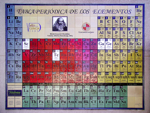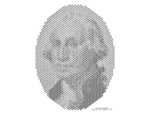 Two of our old friends are back on Grey Matters: Scam School and the game of Nim!
Two of our old friends are back on Grey Matters: Scam School and the game of Nim!
This version uses a dart theme, but you don't even have to be good at the game!
Scam School's 294th episode features an impromptu version of Nim using your fingers as darts, and a napkin as a dartboard:
I'm not going to analyze the play too deeply, as this is simply stanard single-pile Nim, as defined in the first Secrets of Nim post. In addition, it's also essentially the same as Dice Nim, as taught in 250th episode of Scam School, but played to 31 instead of 50.
The Single-Pile Nim tab of the Nim Strategy Calculator can run through the strategy with the following settings:
• Player who makes the last move is the: Winner
• Maximum number of objects (limit): 31
• Nim Game is played: up to limit
• Number of objects used per turn ranges from 1 to: 6
After clicking the Calculate Nim Strategy button, the calculator will return the same strategy in the above video. You can even play around with higher or lower totals, and the numbers you're allowed to use on each turn. What would the strategy be if you allowed the numbers 1 to 7, or 1 to 8? How would it affect the strategy if you play to 32, 35, or 40?
The more interesting aspect of this version of the game, at least to me, is the use of a small dartboard instead of dice. One on hand, this change is merely cosmetic, as it doesn't affect the strategy in any way itself. The psychology on the audience, however, is completely different. Dice aren't as common as dartboards in bars and pubs, so the dart theme makes better sense. In addition, the impromptu nature of drawing on a napkin suggests fairness than someone who brings their own dice, which can suggest that the person suggesting the game has practiced it.
31 also seems to be a favored number for Nim players, most likely because it's high enough to allow you to use your winning strategy, but low enough to keep the game too short for anyone to catch on. In another 31 version using playing cards, the unique nature of playing cards allows you to catch even those who think they know the secret.
As you can see, just examining all the seemingly minor changes in Finger Dart Nim can give you a better understanding of the overall idea behind multiple variations of Nim. If you enjoyed this version, please explore the amazing variety of Nim games taught in other posts here at Grey Matters!











